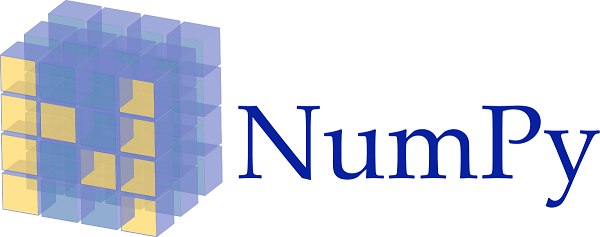NumPy vs SciPy
NumPy- NumPy is the most important Python package for scientific computing. It's a Python library that includes a multidimensional array object, derived objects (like masked arrays and matrices), and a variety of routines for performing fast array operations, such as arithmetical, logical, selecting, I/O, discrete Fourier transforms, fundamental linear algebra, statistical operations, random simulation, sorting, and more.

SciPy- SciPy is a set of open source math, scientific, and engineering programming libraries. The SciPy project includes libraries like as NumPy, Matplotlib, and pandas. SciPy is used by machine learning engineers in a variety of ways to help them create and improve algorithms. SciPy's modular approach is one of the program's key features. SciPy includes a lot of functionality for machine learning projects, with modules for algorithm optimization, linear algebra, integration, and signal processing. It can also be used in conjunction with other visualisation tools such as matplotlib.

To summarize everything we've learnt so far regarding SciPy and NumPy. NumPy and SciPy both are Python libraries that can be used to do mathematical and numerical analyses. NumPy stores array data as well as fundamental operations like sorting, indexing, and so on, whereas SciPy contains all the mathematical functions. Though NumPy has a number of functions to aid in the resolution of linear algebra, Fourier transformations, and other problems, SciPy is the library that includes comprehensive versions of these and other functions. However, if you want to use Python for scientific analysis, you'll need to download both NumPy and SciPy because SciPy is based on NumPy.
Differences between these libraries are tabulated below:

| Point of Difference | NumPy | SciPy |
| Abbreviations | Numerical Python | Scientific Python |
| Type of operations | Sorting, indexing, and other basic operations are performed. It's usually employed while dealing with statistical and data science concepts. | Complex processes, such as algebraic functions and other numerical methods, are performed with this library. |
| Functions | There are a lot of functions here, however they aren't all well defined. | Contains fully featured versions of detailed versions of functions such as linear algebra. |
| Arrays | NumPy Arrays, which are multi-dimensional arrays, contain objects of the same kind, sometimes known as homogenous objects. | SciPy, on the other hand, does not contain any array features as it is more flexible. It is not bound by any homogeneity limitations. |
| Base Language of creation | NumPy is written in the C programming language. | Python is used to write SciPy. |
| Speed | It runs faster because it is written in C. | It has a slower runtime because it is written in Python, but it has a lot of features. |
Sub-Packages of SciPy
SciPy incorporates a range of sub-packages for different scientific computations, as mentioned in the table below:
| Sub-packages | Description |
| cluster | Algorithms for clustering |
| constants | Constants in physics and mathematics |
| fftpack | Fourier Transform Routines for transformation |
| integrate | Method for solving integration plus ordinary differential equations |
| interpolate | Smoothing splines and interpolation |
| io | Output and Input |
| linalg | Linear algebra, it is a branch of mathematics |
| ndimage | Image processing in N dimensions |
| odr | Regression with orthogonal distances |
| optimize | Routines for optimization and root-finding |
| signal | processing of signals |
| sparse | Sparse matrices and the algorithms that go with them |
| spatial | Algorithms and spatial data structures |
| special | Special features |
| stats | Statistical functions and distributions |